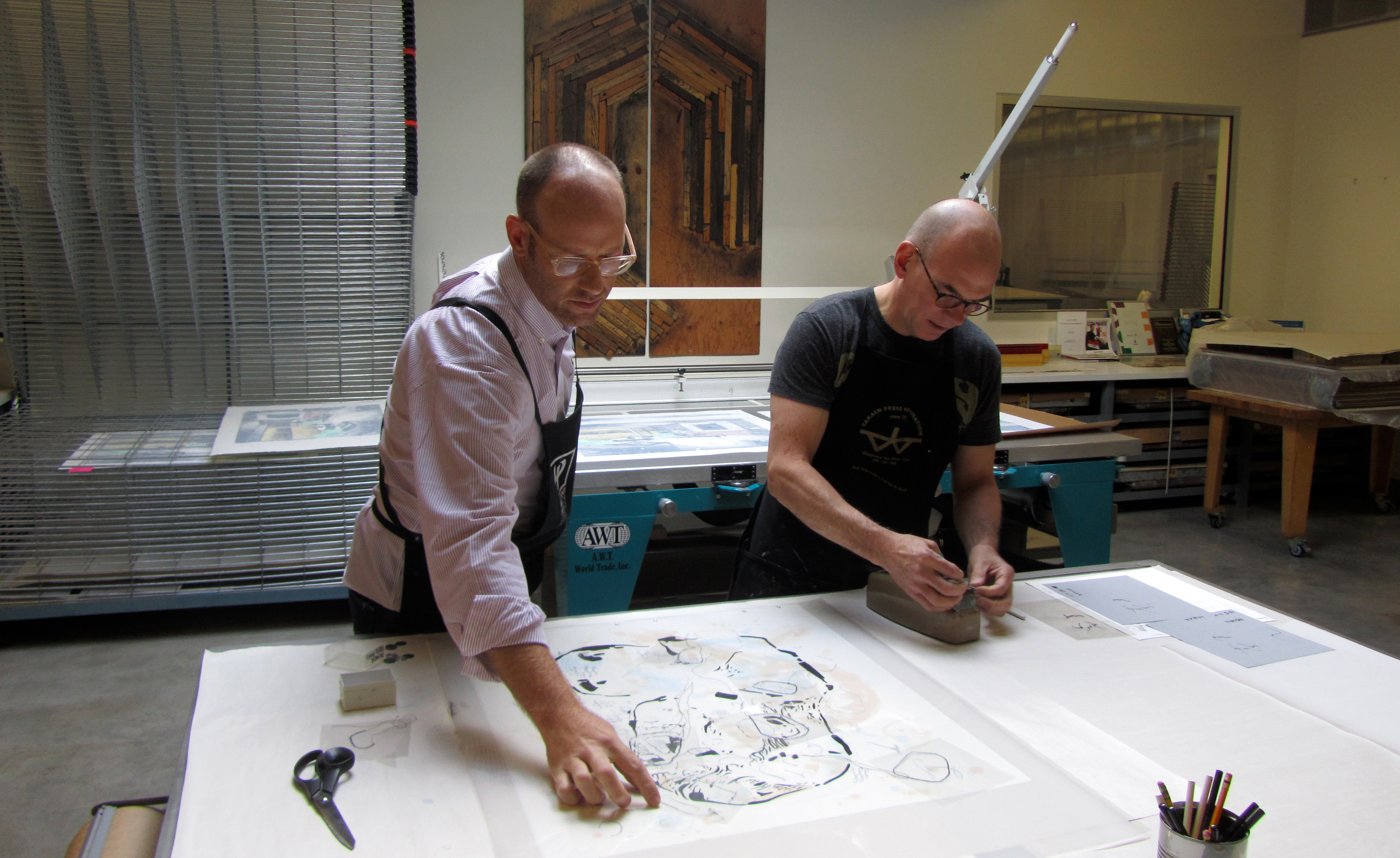
Born 1970, Norwich, Connecticut
For Carter, who grew up making art, Norwich, Connecticut, was apparently a lucky place to live. Locals could attend high school tuition-free at the private Norwich Free Academy, which has its own museum, the Slater Memorial. As a student, Carter (born John Carter, he uses a single name) spent countless hours there drawing from the world’s great classical and Renaissance sculpture—these in the form of plaster casts funded by benefactor William A. Slater. Today, classical imagery surfaces in Carter’s work, as in the busts in the Highpoint screenprint Forthcoming (2011) (cat. no. 38) . The artist says that he is drawn to the “genericness” of antique Greek and Roman faces; the concept of identity as nonspecific, unfixed, and always transforming is part of his overarching interest in how gay men and women of the 1950s, 1960s, and 1970s were routinely compelled by social norms to hide their true selves. “I’ve always been interested in the culture of homophobia and the homosexual identity,” he says, “particularly when it comes to notions of ‘the closet,’ those forced to create codes and signals and an alternate space to maneuver, adjacent to and hidden from the heteronormative—and how those signals and codes still play out and evolve today.”1 The midcentury living room in the Highpoint screenprint Continuous (2011) (cat. no. 37) is a stand-in for such a life. “It looks safe, desirable, homey, but really it’s a stage, a false space,” he says. His mark making suggests that what lies below the surface is very different.
Vague and open-ended, Carter’s work often depicts floating heads and unsettling pick-and-choose options for the faces. The features, one writer has said, often refer to the artist’s own physiognomy.2 Carter freely combines drawing, painting, photography, and , and in the 2010s he began adding hand towels with eye or mouth holes—veils that both obscure and reveal what lies beneath. The hand-cut orifices in the 2012 Highpoint print Selfsame (although) (cat. no. 40) function in the same way, letting us glimpse the lithograph bust below. For recent portraits Carter has incorporated needlework . “The notion of the gay stereotype meant you were effeminate,” he says. “Feminine materials like towels, samplers, and doilies subtly reference that. It all gets back to that.”

Carter earned a BFA (1992) at the Maryland Institute College of Art in Baltimore and an MFA (1997) at the University of California, Davis. In 1994, he attended the Skowhegan School of Painting and Sculpture in Maine. In addition to making Polaroids, sculpture, and video, he wrote and directed two films: Maladies (2012) and Erased James Franco (2009). His solo shows include “Didn’t We Almost Have It All” (2020), Anglim Gilbert Gallery, San Francisco; “American Painting” (2017), Georg Kargl, Vienna; “Twelve Drawings” (2015), Gallery Paule Anglim, San Francisco; “Some Feelings, 1984, 1970” (2013), Marc Jancou Contemporary, New York; “Janus Travestito” (2012), Annarumma Gallery, Naples, Italy; and “Leg Opens Door/1963” (2008), Yvon Lambert, Paris. He also participated in “Persona: A Body in Parts” (2011), Weatherspoon Art Museum, Greensboro, North Carolina; “Peripheral Vision and Collective Body” (2008), Museion, Bolzano, Italy; Whitney Biennial (2006), Whitney Museum of American Art, New York; and other exhibitions. Carter lives in New York.
—Marla J. Kinney
Notes
Carter, phone conversations with the author, August 2020. ↩︎
Matthew Higgs, “White Room: Carter,” White Columns, New York, May 6–June 11, 2005, accessed December 29, 2020, https://whitecolumns.org/exhibitions/carter/. ↩︎